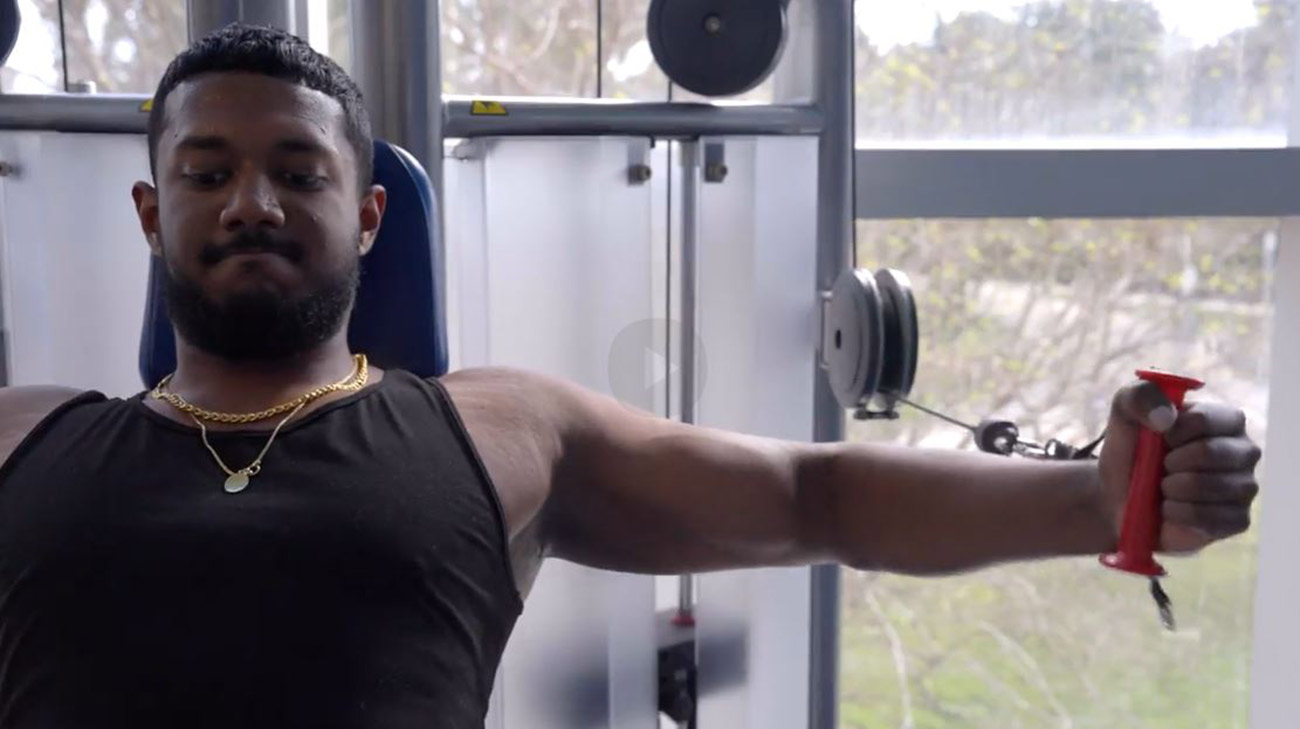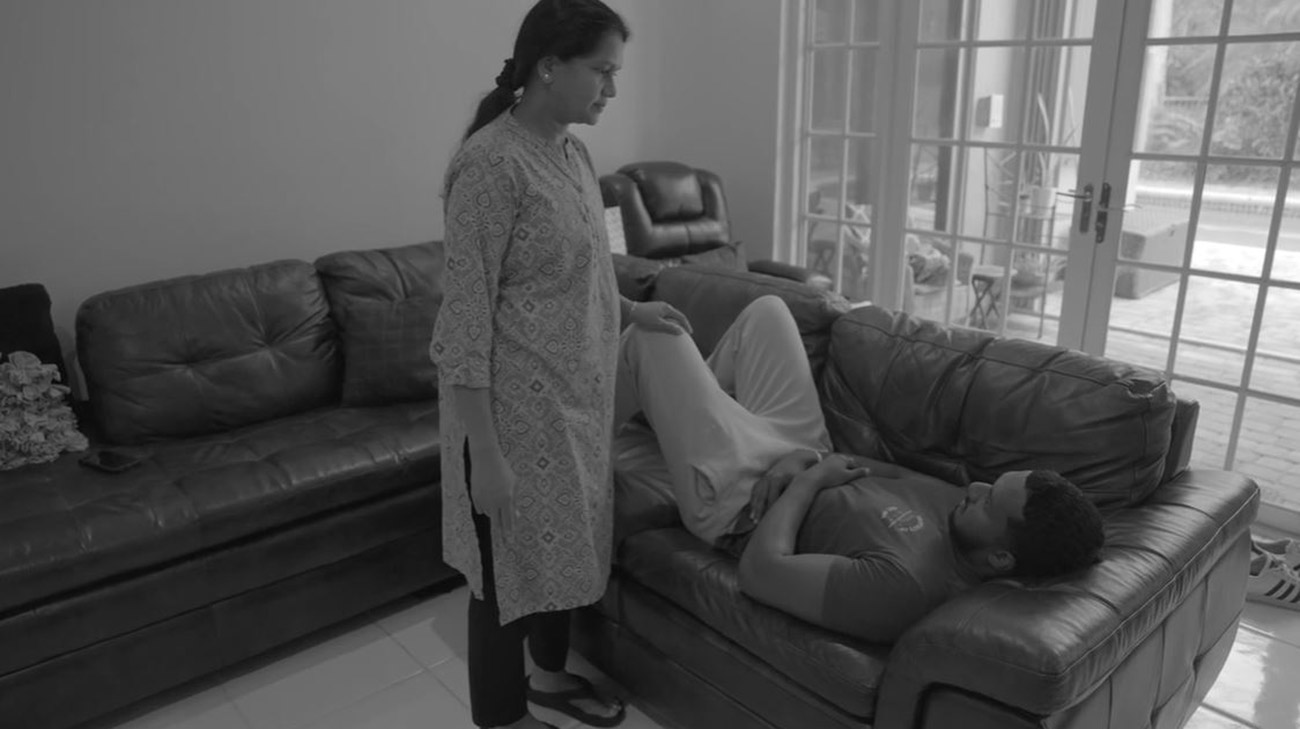At 25 years old, Alfin Jeyaseelan was in great health. The Weston resident and full-time college student had been a recreational weightlifter for about five years and described himself as someone who lived a “clean” lifestyle that was focused on exercise, nutrition and personal growth and development. So, when one night in October of 2024 he started to not feel well, he chalked it up to simply having a virus.

At just 25 years old, Alfin would have no idea the ordeal he was about to endure. (Photo Courtesy: Alfin Jeyaseelan)
“I felt neck pain in the back of my skull,” Alfin says. “I went to bed thinking it was a muscle issue.” At 1:30 a.m., he woke up with double vision, and at 5 a.m. he woke up again so nauseous he had to throw up.
He fell in and out of sleep until 6 p.m. the next day. When his mother (with whom he lives with) went in to check on him, he told her his eyes were hurting. His speech was getting slurred, and he was still nauseous. Though Alfin still insisted it was a virus, his mother was becoming more concerned. When Alfin stood up and was unable to use his right leg, she decided to call an ambulance.
“I was not thinking it was a stroke,” Alfin says. “I am young, so I did not think the worst.”
When he arrived at Cleveland Clinic Weston Hospital’s emergency department, a neurological assessment was done that included CT scans and an MRI. Within 10 minutes it was determined that there was a blood clot in Alfin’s brain that needed to be removed immediately. Alfin was on the brink of having a stroke.

What seemed like a simple virus, quickly became an emergency situation when the blood clot was discovered in Alfin's brain. (Photo Courtesy: Alfin Jeyaseelan)
“The blood clot was migrating and causing all kinds of symptoms,” says Michal Obrzut, MD, Head of Neurointerventional Radiology at Weston Hospital. “If he had come in a few minutes later, it would have been a completely different outcome that usually is not reversible.”
Because the clot was moving around, Alfin was having symptoms that would then resolve as the clot moved on. However, by the time he got to the hospital, the clot was in the mid-brain, which is the “central processing center” of the brain, says Dr. Obrzut. If the clot were to lodge and block the artery there, which it was dangerously close to doing, it would cause something called “locked-in syndrome,” a condition in which a person is conscious but unable to move or speak.
Within 25 minutes of Alfin’s arrival at the hospital, Dr. Obrzut and his team were able to endoscopically remove the clot via an operation called a mechanical thrombectomy. In the procedure, a special catheter is inserted into the artery in the groin and threaded through to the brain. Once there, doctors are able to suction out the clot and prevent any further damage to the brain.

Within minutes, Dr. Obrzut was able to remove the clot before it could migrate further into Alfin's central processing center. (Photo Courtesy: Cleveland Clinic)
“That was truly nothing short of a miracle,” Alfin says of the successful surgery. “Cleveland Clinic was amazing. The neuro team are a bunch of rock stars.”
Though he remained in the hospital for three days after the procedure, Alfin said he felt better pretty much right away. His recovery was quick – he was back at the gym less than two weeks later. And the only real side effect is an occasional bright spot in the corner of his eye that affects his vision.
“I’m just very grateful. I didn’t think strokes were something that could happen in your 20s,” Alfin says.

Alfin's blood clot was removed endoscopically through a procedure called a thrombectomy, where a doctor threads a special catheter through a patient's groin all the way to the brain. (Photo Courtesy: Cleveland Clinic)
Strokes can happen at any age, Dr. Obrzut says. In fact, about 15 percent of them happen in people under the age of 50. While arterial dissection (tearing of the inner layer of the artery) is the most common reason for stroke in younger people, people are more sedentary now, Dr. Obrzut adds. This can lead to high blood pressure, cholesterol and obesity, which has increased the incidence of stroke in young people.
In Alfin’s case, he had an injury in his artery due to a genetic condition that caused weaker than normal blood vessels. The injury was exacerbated by his weightlifting, which eventually led to the clot that was found in his brain. Though he is exercising again, and encouraged to do so, Alfin has been advised by his medical team not to lift such heavy weights anymore.
Dr. Obrzut advises anyone who is having symptoms of a stroke – loss of balance, strange quick onset of headache, facial droop or weakness in the arms or legs – to go to the hospital right away.
“It can make a difference for a full recovery,” he says.
Related Institutes: Neurological Institute

